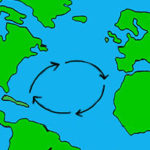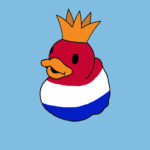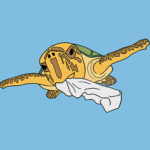Animal suffering
When animals eat so much plastic that there’s no more room for real food, they can die of starvation. But that’s not the only form of animal suffering caused by all of the plastic in our oceans. Larger animals, such as sea turtles, can become entangled in abandoned fishing nets, which keeps them from finding food and eventually causes them to starve to death.
Caught in plastic
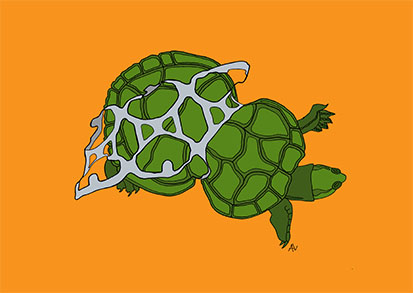
Animals can also get caught in plastic six-pack rings. This form of plastic is prohibited in the Netherlands, but is still allowed in other countries in Europe and abroad.
Some animals also become entangled in plastic waste1. These animals suffer a slow death from drowning, starvation, or infections from injuries2. The most common form of entanglement, however, is when animals get caught in abandoned fishing nets; also known as ‘ghost fishing’.
Suffocation hazard
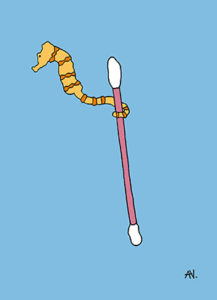
Seahorses naturally tend to hold on to objects in order to be carried along with the current. Near the Indonesian island of Sumbawa, a seahorse looks for support from a cotton swab.
Plastic not only has direct effects on marine life, but also indirect effects. Plastic that ends up in the ocean can suffocate underwater plants and coral, which in turn threatens the habitats of many sea animals.
Some of the plastic that ends up in the ocean stays floating on the surface, but most plastic doesn’t stay there for very long. Much of it eventually ends up on the ocean floor. Large plastic objects, such as abandoned fishing nets, large plastic bags, or containers, sink to the bottom of the sea. There, these objects suffocate the animals that live there, or smother the plants and coral. Plastic on the ocean floor also blocks oxygen from the underlying sand, which eventually kills the animals that live under the sea floor 3.
[well size=”sm”]
Spookvissen
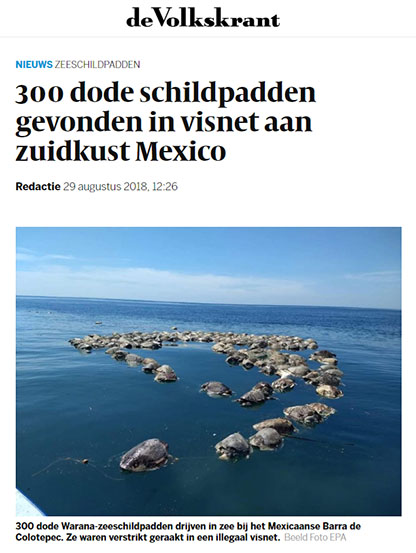
Read in the Volkskrant about how 300 turtles all became victims of ghost fishing at the same time.
Ghost fishing is a problem whereby large animals, such as whales, turtles, seals, and dolphins, become entangled in lost or abandoned fishing nets.
As you can read in this article in the Volkskrant, 300 turtles recently became victims of ghost fishing.
But sea turtles are not the only animals that get caught in abandoned nets. The fish that the nets were originally intended to catch also become entangled, without ever being brought to market.
[/well]
[collapsibles]
[collapse title=Sources]
1 Gall, S. C., & Thompson, R. C. (2015). The impact of debris on marine life. Marine pollution bulletin, 92(1-2), 170-179.
2 Laist, D. W. (1997). Impacts of marine debris: entanglement of marine life in marine debris including a comprehensive list of species with entanglement and ingestion records. In Marine Debris (pp. 99-139). Springer, New York, NY.
3 Kühn, S., Rebolledo, E. L. B., & van Franeker, J. A. (2015). Deleterious effects of litter on marine life. In Marine anthropogenic litter (pp. 75-116). Springer, Cham.
[/collapse]
More interesting info…
